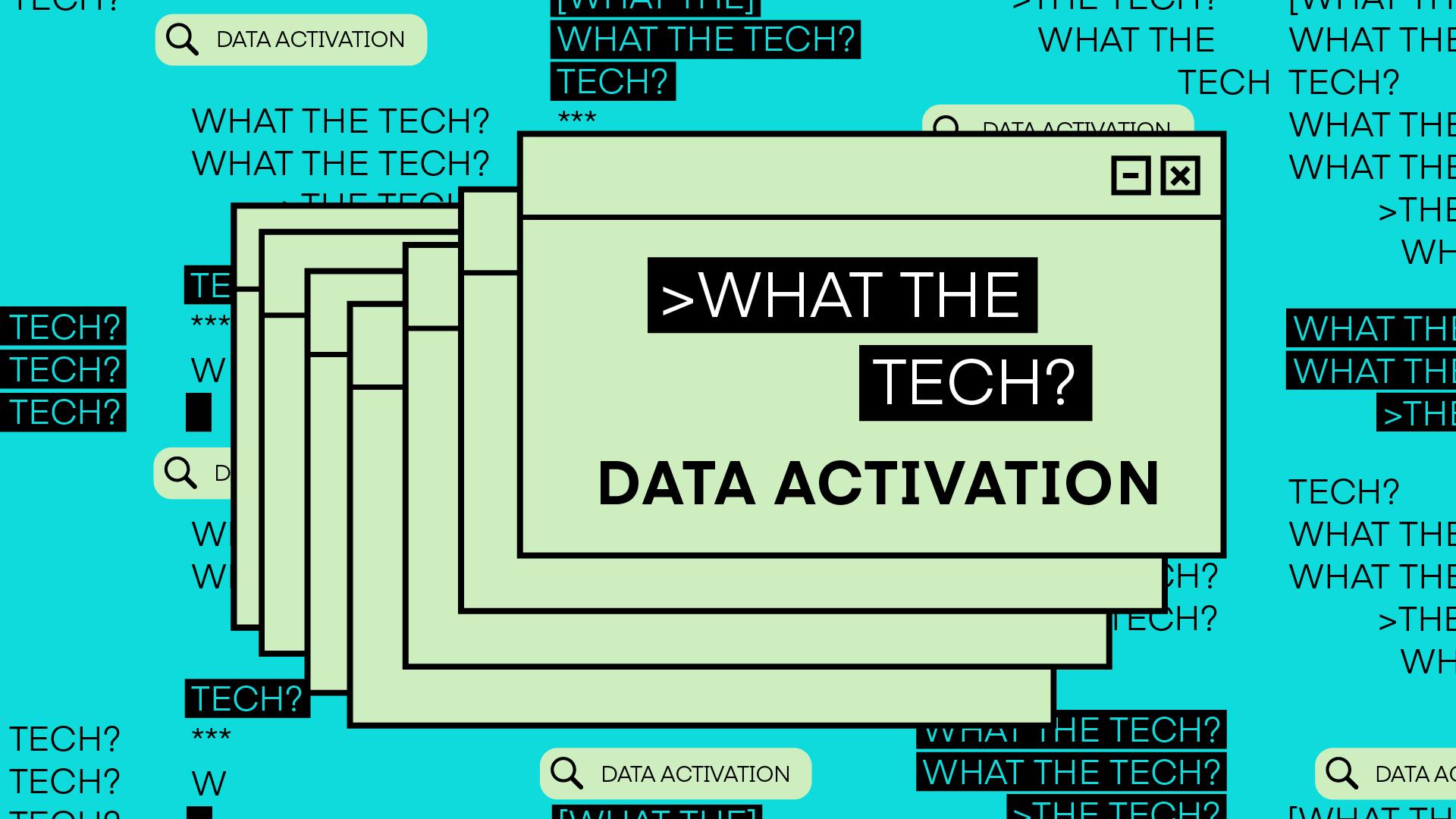What the Tech is data activation?

The words “data activation” get thrown around a lot in advertising, but what exactly do they mean? We explain — in plain English — in our latest edition of What the Tech?
Digital advertising is an industry increasingly dominated by data — so much so that ad execs are fond of calling this the “Math Men era,” in which data analysts are the new industry hotshots, as opposed to the Mad Men era, in which brilliant creatives and slick account execs ran the show.
Over the past 15 years, a cottage industry has formed around the collection of valuable consumer data. This data helps advertisers glean important insights into consumer interests and behaviors and serve them advertising relevant to their lifestyle. Serving up relevant advertising helps marketers drive more precision and delivers a more personalized experience for users. When it works as intended, everyone wins.
None of this would be possible without data activation, though, which is our topic here today.
What is data activation?
Data activation is, quite simply, the process by which data collected by an advertiser gets put into action in the form of an advertising campaign.
For instance: Let’s say a grocery store has consumer data as a result of its loyalty program, whereby frequent shoppers receive value, such as discounts, in return for shopper data. The grocer wants to launch an email campaign advertising its wide array of barbecue items — burgers, hot dogs, beer — for the upcoming Memorial Day holiday. In order to execute the campaign, the brand would need to activate its shopper data and use it to inform campaign precision.
Ok…but how does it work?
It can work several ways depending on the dataset being activated.
When a brand has data on its customers, it’s known as first-party data, and first-party data is relatively easy to activate. Going back to the email campaign example cited above, a brand would just need to call upon its list of relevant email addresses and then load them into the campaign settings. Other kinds of first-party data are sourced from how consumers interact with the brand in-store and online.
Still, brands can have trouble combining these different datasets. Let’s go back to the grocery store example. Say the grocer wants to expand its Labor Day email campaign to include social media and display ads, as well. To run a cohesive, multi-channel campaign, it would need to combine those disparate datasets into one location, and use that comprehensive dataset to set the campaign parameters. Doing that can be hard, though, especially if a brand has a fractured data infrastructure. Datasets can exist in different servers, and bringing them together can be a colossal IT project.
Fortunately, advertising technology companies specialize in this kind of multi-channel data activation, so it eases some of the pain.
Sounds complicated.
It is. And that’s just first-party data. Third-party data makes things even more complex.
First-party data is widely regarded as the most valuable kind of data available, but advertisers often supplement their campaigns with third-party data.
Just like it sounds, third-party data is aggregated consumer data provided by a company that is not the advertiser itself or the publisher running the ad. Third-party data can make a campaign even more sophisticated, scaled and relevant, which is why brands use it. But it also can make data activation more complicated. If an advertiser already has a tough time activating its own data, you can imagine how challenging it is to layer in data from third parties.
What’s the solution?
Data activation challenges have given rise to demand-side platforms, one of the many software platforms advertisers use to target and execute ad campaigns.
A demand-side platform (or DSP, for short) provides a centralized location for an advertiser’s first- and third-party data. Integrating data on one convenient platform allows brands to more easily call upon and deploy it (or activate it) when planning and executing a campaign.
Back to the grocery store. Let’s say the grocer wants to make its Labor Day campaign even more sophisticated by adding third-party data to its data mix. Specifically, it would like to reach people who have recently shown an interest in “barbecue recipes” online and visited related websites.
Using a DMP, the grocer could combine this third-party data with its first-party data to refine its campaign and develop even more precise audience segments. This will, in theory, deliver drive down costs and deliver better results, and it’s all made possible by data activation.
Now, how to measure all that? We’ll get to attribution another time.